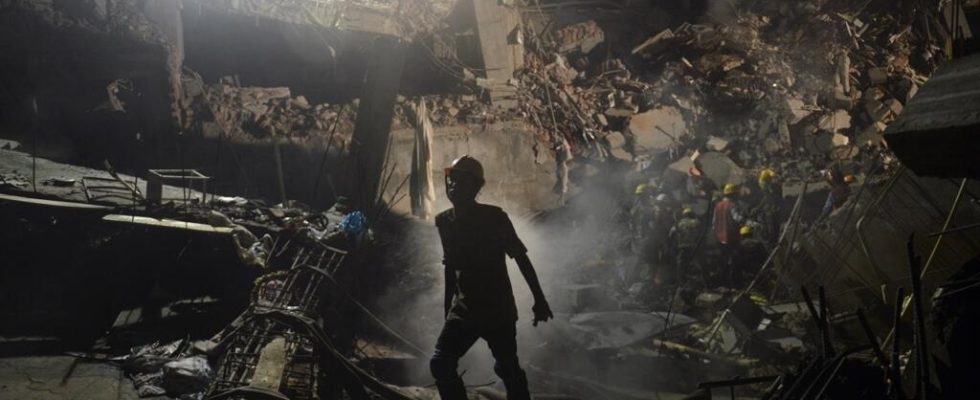Ten years ago, the Rana Plaza accident took place, the deadliest in the recent history of the textile industry. In Bangladesh, on April 24, 2013, 1,134 people died in the collapse of an eight-storey building, partially built illegally in Dhaka. Most were workers and made clothes for major Western brands like Benetton, Gucci or Zara. This tragedy led to the establishment of a building security control system, which made it possible to avoid new tragedies.
With our regional correspondent, Sebastien Farcis
The outrage caused by the Rana Plaza accident forced international brands and local factories to agree to the creation of an independent factory inspection structure in Bangladesh. This Agreement, as it is called, is innovative. It obliges the brands to pay for the repairs of the buildings of their subcontractors.
And it works: for 10 years, there have been no major accidents, rejoices Kalpona Akter, the president of the Bangladeshi Federation of Textile Workers: “ Our textile factories are much safer today. We are no longer afraid of a new Rana Plaza. And it happened thanks to the phenomenal work of the Accord. »
A total of 175 brands are signatories to this Agreement, covering more than two million Bangladeshi textile workers, or half of them. But over the past three years, the structure has changed. ” The board of directors is no longer egalitarian: there are twelve members for the industrialists against six for the unions. However, factory owners are opposed to this control system. So we fear it will be challenged says Kalpona Akter.
The same inspection system has just been deployed in Pakistan. And 35 foreign brands present on the spot, such as Carrefour and Monoprix, have integrated it.
► Also to listen to Bangladesh: 10 years after the Rana Plaza tragedy, “the workforce continues to be exploited”
